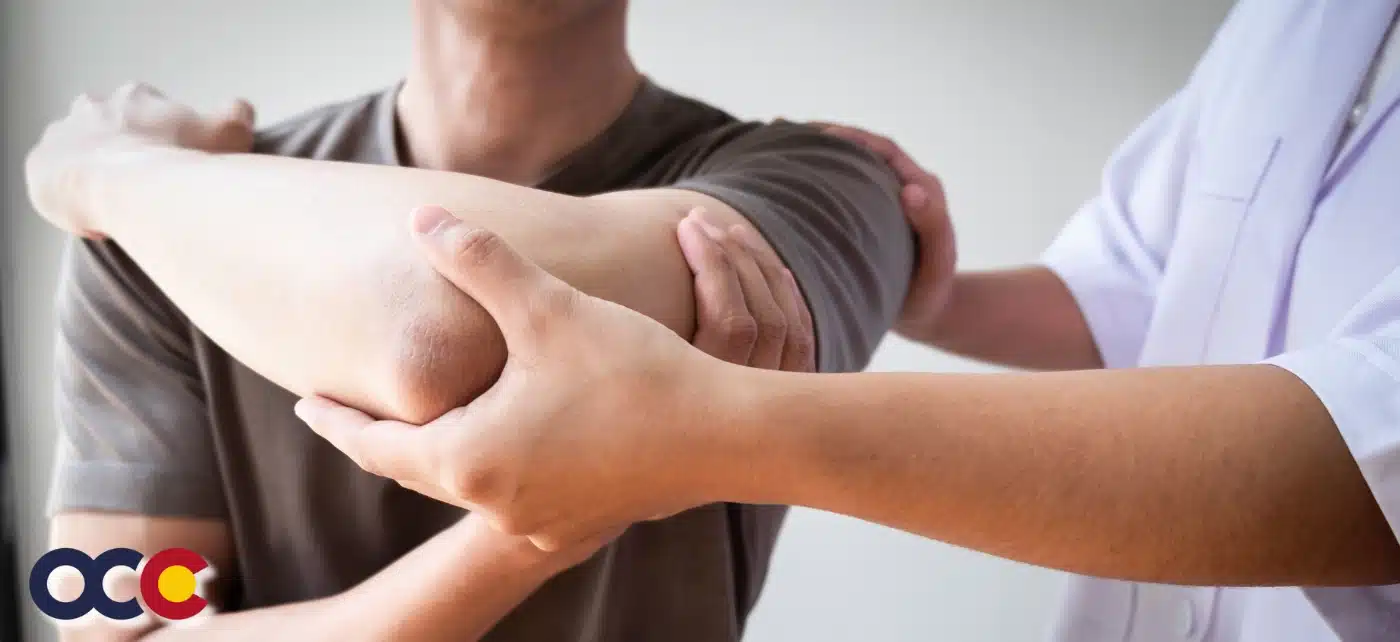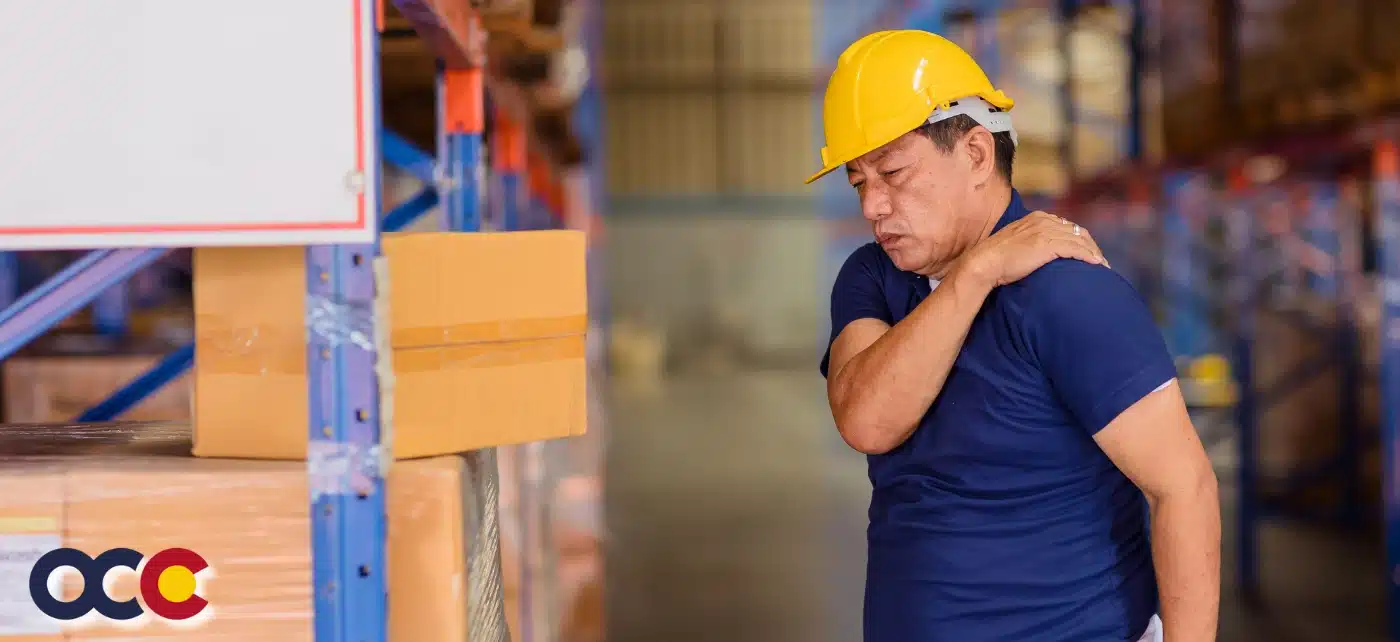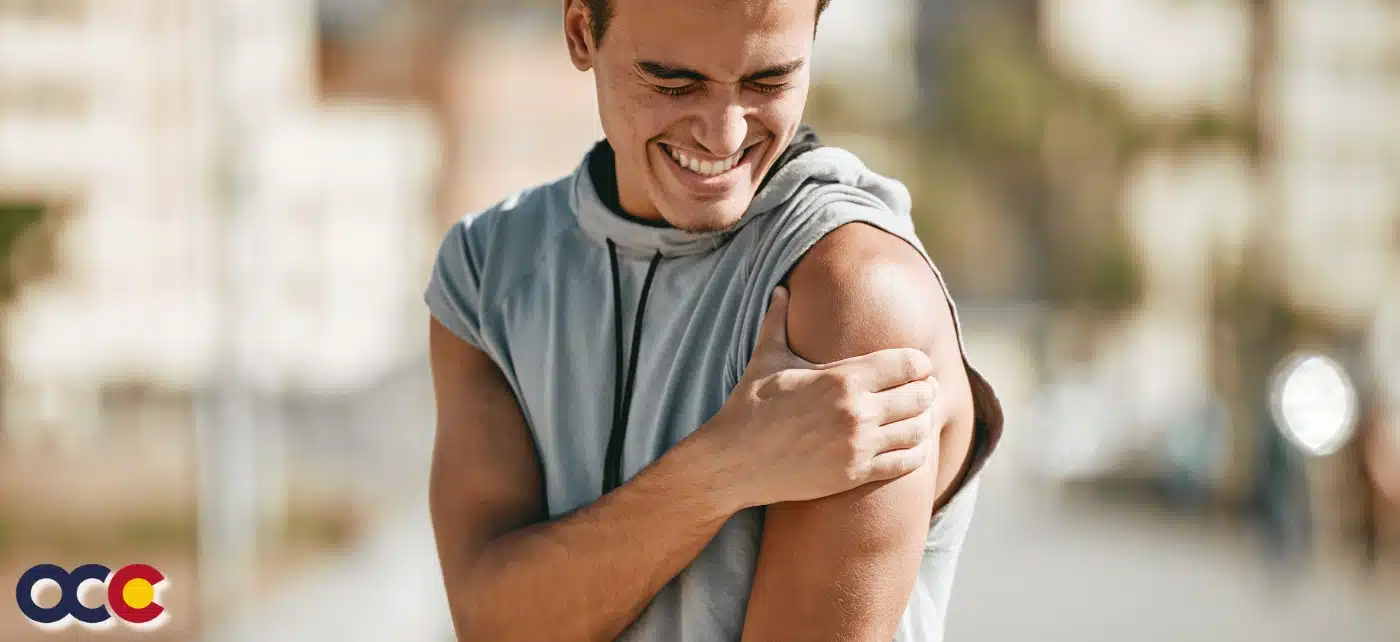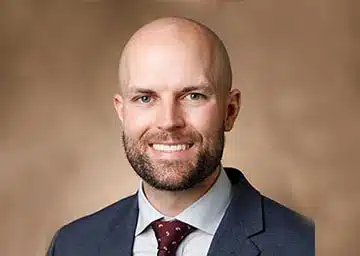Shoulder pain can stem from a variety of injuries or diseases or overuse. Identifying the source of the pain and the extent of the damage is essential to determine the best course of action to relieve the pain. By conducting a complete medical evaluation, your orthopedic doctor can determine the severity of your situation and if shoulder replacement is an option for you.
Shoulder Pain Causes
Use, overuse, impact injuries and disease are the most common sources of shoulder pain. Fall and winter sports such as football, hockey and snowboarding are examples of high impact or collision sports that can produce serious shoulder pain.
The severity of the shoulder injury guides the best treatment option. Non-surgical shoulder pain treatments such as rest, ice and anti-inflammatory medications can resolve some shoulder pain while other causes require surgical treatments including a shoulder replacement.
Shoulder replacement is indicated when the articular cartilage of the joint is completely damaged or if there is a massive non-repairable rotator cuff tear.
Shoulder replacement is an effective long-term option when shoulder damage or disease is severe, or muscle and tendon tears cannot be repaired. A shoulder replacement can restore comfort, mobility, and function.
Types of Shoulder Replacement Surgery
There are three main types of shoulder replacement surgery. Individual patient circumstances vary, and the nature of your shoulder injury will determine which type of replacement is right for you. Shoulder replacement surgery options include: a partial shoulder replacement, a total shoulder replacement, or a reverse total shoulder replacement. Your orthopedic surgeon will help you determine which is the right fit for you.
Partial shoulder replacement: When shoulder damage is contained to the head or ball of the humerus bone and the rest of the shoulder is healthy, a partial shoulder replacement is often recommended. This procedure removes the damaged ball portion of the upper arm bone and replaces it with a metal prosthetic.
Total shoulder replacement: When shoulder damage involves both the ball and the socket, metal and plastic prosthetics are inserted to restore shoulder joint function. With proper rehabilitation, total shoulder replacement patients can experience significant improvements in pain and movement. The rotator cuff must be in good condition for this to take place.
Reverse shoulder replacement: When shoulder damage includes the rotator cuff tendons, the conventional ball and socket positions are switched – the prosthetic ball is fixed to the socket, and the socket “cup” is fixed to the upper end of the humerus in place of the ball. The result of the alignment uses the deltoid muscle, rather than the damaged rotator cuff tendons, to move the shoulder and arm.
Recovery from Shoulder Replacement Surgery
Pre-surgery Expectations
The severity of the shoulder injury and patient health, age and fitness are major drivers of recovery timelines. Generally, complete recovery from a shoulder replacement can take approximately six months. The most important variable in recovery is a patient’s commitment to their recovery and rehabilitation protocol. The main reason to replace you shoulder is to relieve the pain. In most cases, improvement in function occurs as well.
Physical therapy typically begins as soon as one week after surgery with movements designed to restore flexibility and aid healing. Under the guidance of your orthopedist, rehabilitation plans should be led by certified physical therapists to guide a careful progression of progressive strength work and graduated flexibility exercises.
Post-surgery Expectations
The majority of people experience great outcomes with a shoulder replacement: more than three out of four patients return to their preferred pre-injury exercise or activity. Golf, tennis, swimming, and fishing are among the sports and movements most frequently resumed following shoulder replacement surgeries.
Don’t let chronic shoulder pain keep you sidelined from your daily activities. The team at Advanced Orthopedic and Sports Medicine specialists can diagnose and recommend the right treatment for your shoulder pain.
[av_heading heading=’Best Shoulder Replacement Surgeons’ tag=’h3′ style=” subheading_active=” show_icon=” icon=’ue800′ font=’entypo-fontello’ size=” av-medium-font-size-title=” av-small-font-size-title=” av-mini-font-size-title=” subheading_size=’15’ av-medium-font-size=” av-small-font-size=” av-mini-font-size=” icon_size=” av-medium-font-size-1=” av-small-font-size-1=” av-mini-font-size-1=” color=” custom_font=” subheading_color=” seperator_color=” icon_color=” margin=” margin_sync=’true’ padding=’10’ icon_padding=’10’ headline_padding=” headline_padding_sync=’true’ link=” link_target=” id=” custom_class=” template_class=” av_uid=’av-ktt4kxa7′ sc_version=’1.0′ admin_preview_bg=”][/av_heading]
[av_one_third first min_height=” vertical_alignment=” space=” custom_margin=” margin=’0px’ padding=’0px’ border=” border_color=” radius=’0px’ background_color=” src=” background_position=’top left’ background_repeat=’no-repeat’ animation=” mobile_breaking=” mobile_display=” av_uid=’av-q082ph’]
[av_image src=’https://advancedortho.org/wp-content/uploads/2013/01/ferrari_feature1.png’ attachment=’789′ attachment_size=’full’ align=’center’ styling=” hover=” link=” target=” caption=” font_size=” appearance=” overlay_opacity=’0.4′ overlay_color=’#000000′ overlay_text_color=’#ffffff’ copyright=” animation=’no-animation’ av_uid=’av-jhhxhm0t’ custom_class=” admin_preview_bg=”][/av_image]
[av_textblock size=” font_color=” color=” av-medium-font-size=” av-small-font-size=” av-mini-font-size=” av_uid=’av-jhhxeat7′ custom_class=” admin_preview_bg=”]
Dr. James Ferrari
[/av_textblock]
[av_button label=’Meet Dr. Ferrari’ link=’post,587′ link_target=” size=’small’ position=’center’ label_display=” icon_select=’yes’ icon=’ue80a’ font=’entypo-fontello’ color=’theme-color’ custom_bg=’#444444′ custom_font=’#ffffff’ av_uid=’av-jhhxi5li’ custom_class=” admin_preview_bg=”]
[/av_one_third]
[av_one_third min_height=” vertical_alignment=” space=” custom_margin=” margin=’0px’ padding=’0px’ border=” border_color=” radius=’0px’ background_color=” src=” background_position=’top left’ background_repeat=’no-repeat’ animation=” mobile_breaking=” mobile_display=” av_uid=’av-dnizjp’]
[av_image src=’https://advancedortho.org/wp-content/uploads/2013/01/motz_feature1.png’ attachment=’795′ attachment_size=’full’ align=’center’ styling=” hover=” link=” target=” caption=” font_size=” appearance=” overlay_opacity=’0.4′ overlay_color=’#000000′ overlay_text_color=’#ffffff’ copyright=” animation=’no-animation’ av_uid=’av-jhhxncdx’ custom_class=” admin_preview_bg=”][/av_image]
[av_textblock size=” font_color=” color=” av-medium-font-size=” av-small-font-size=” av-mini-font-size=” av_uid=’av-jhhxeat7′ custom_class=” admin_preview_bg=”]
Dr. H. Andrew Motz
[/av_textblock]
[av_button label=’Meet Dr. Motz’ link=’post,601′ link_target=” size=’small’ position=’center’ label_display=” icon_select=’yes’ icon=’ue80a’ font=’entypo-fontello’ color=’theme-color’ custom_bg=’#444444′ custom_font=’#ffffff’ av_uid=’av-jhhxntha’ custom_class=” admin_preview_bg=”]
[/av_one_third]
[av_one_third min_height=” vertical_alignment=” space=” custom_margin=” margin=’0px’ padding=’0px’ border=” border_color=” radius=’0px’ background_color=” src=” background_position=’top left’ background_repeat=’no-repeat’ animation=” mobile_breaking=” mobile_display=” av_uid=’av-8yi0wl’]
[av_image src=’https://advancedortho.org/wp-content/uploads/2013/01/papillion_feature1.png’ attachment=’797′ attachment_size=’full’ align=’center’ styling=” hover=” link=” target=” caption=” font_size=” appearance=” overlay_opacity=’0.4′ overlay_color=’#000000′ overlay_text_color=’#ffffff’ copyright=” animation=’no-animation’ av_uid=’av-jhhxslv7′ custom_class=” admin_preview_bg=”][/av_image]
[av_textblock size=” font_color=” color=” av-medium-font-size=” av-small-font-size=” av-mini-font-size=” av_uid=’av-jhhxeat7′ custom_class=” admin_preview_bg=”]
Dr. John Papilion
[/av_textblock]
[av_button label=’Meet Dr. Papilion’ link=’post,605′ link_target=” size=’small’ position=’center’ label_display=” icon_select=’yes’ icon=’ue80a’ font=’entypo-fontello’ color=’theme-color’ custom_bg=’#444444′ custom_font=’#ffffff’ av_uid=’av-jhhxt1oa’ custom_class=” admin_preview_bg=”]
[/av_one_third]
















